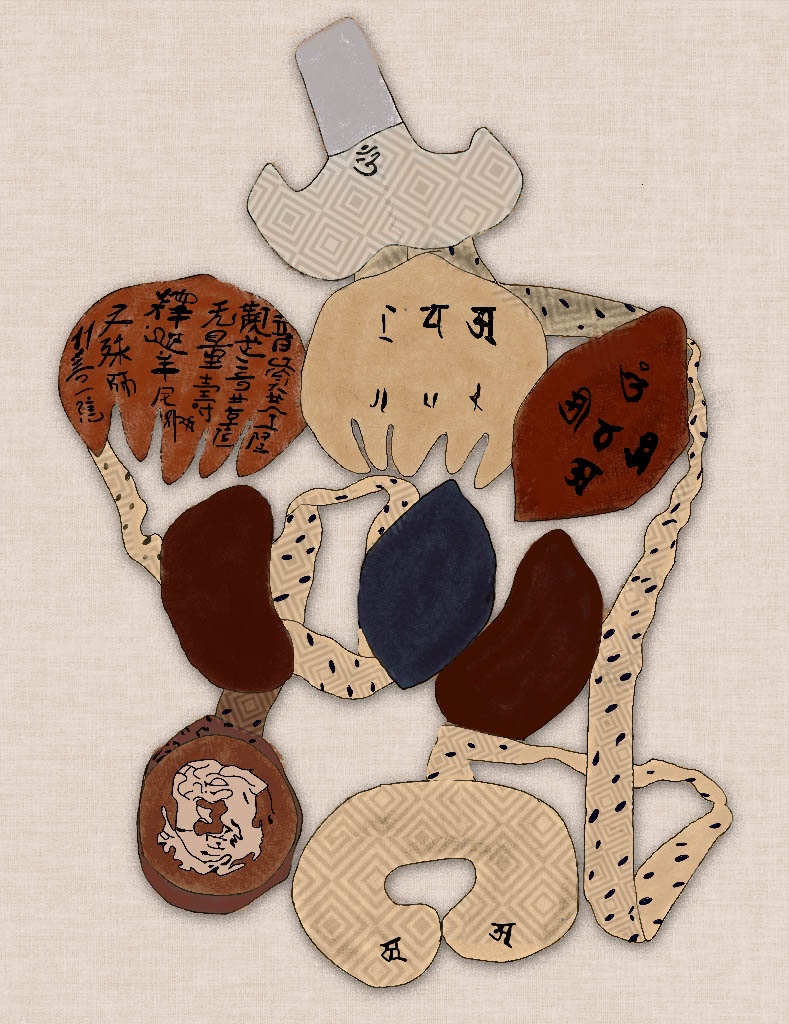
Digital rendition by Stella Thumiger after ‘ The viscera models in the statue of Sakyamuni’, Seiryōji Monestary, Kyoto (985)
In Medieval China, it was customary to put viscera models in Buddha statues. Some of them are still extent today. This one is the representative, which was brought to Japan from Taizhou, Zhejiang in 985, and is the oldest extant organ model. This group is made of silk, fully colored. From the relevant inscriptions, we know the donators of the model are three nuns with names and seven anonymous women, but no other information available. Compared with the Chinese orthodox internal organs, neither the content nor the color match. There is no distinction between the large bowels and small intestines. Its background color is white, and it is covered with blue spots, as if the food being digested is flowing in it.